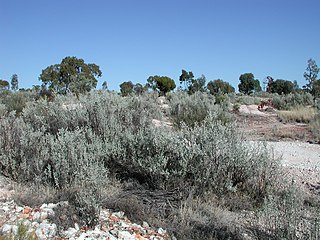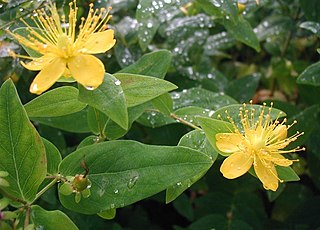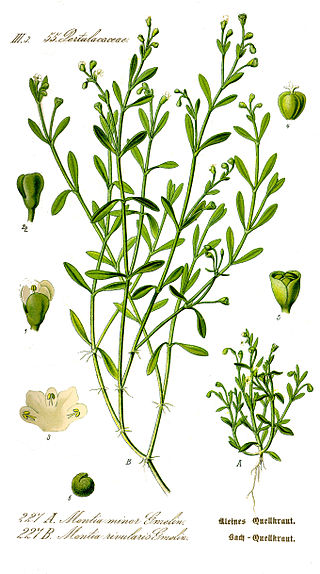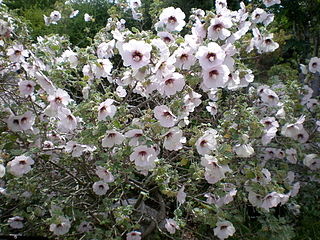
Brassicaceae or Cruciferae is a medium-sized and economically important family of flowering plants commonly known as the mustards, the crucifers, or the cabbage family. Most are herbaceous plants, while some are shrubs. The leaves are simple, lack stipules, and appear alternately on stems or in rosettes. The inflorescences are terminal and lack bracts. The flowers have four free sepals, four free alternating petals, two shorter free stamens and four longer free stamens. The fruit has seeds in rows, divided by a thin wall.

Caryophyllaceae, commonly called the pink family or carnation family, is a family of flowering plants. It is included in the dicotyledon order Caryophyllales in the APG III system, alongside 33 other families, including Amaranthaceae, Cactaceae, and Polygonaceae. It is a large family, with 81 genera and about 2,625 known species.

The Nymphalidae are the largest family of butterflies, with more than 6,000 species distributed throughout most of the world. Belonging to the superfamily Papilionoidea, they are usually medium-sized to large butterflies. Most species have a reduced pair of forelegs and many hold their colourful wings flat when resting. They are also called brush-footed butterflies or four-footed butterflies, because they are known to stand on only four legs while the other two are curled up; in some species, these forelegs have a brush-like set of hairs, which gives this family its other common name. Many species are brightly coloured and include popular species such as the emperors, monarch butterfly, admirals, tortoiseshells, and fritillaries. However, the under wings are, in contrast, often dull and in some species look remarkably like dead leaves, or are much paler, producing a cryptic effect that helps the butterflies blend into their surroundings.

The Gemma Augustea is an ancient Roman low-relief cameo engraved gem cut from a double-layered Arabian onyx stone. It is commonly agreed that the gem cutter who created it was either Dioscurides or one of his disciples, in the second or third decade of the 1st century AD.

Amaranthus dubius, the red spinach, Chinese spinach,, spleen amaranth, hon-toi-moi, yin choy, hsien tsai, or Arai keerai is a plant species. It belongs to the economically important family Amaranthaceae.
Chenopodium benthamii is a species of shrub endemic to midwest Western Australia.

The Palazzo delle Esposizioni is a neoclassical exhibition hall, cultural center and museum on Via Nazionale in Rome, Italy.

Atriplex nummularia is a species of saltbush from the family Amaranthaceae and is a large woody shrub known commonly as oldman saltbush. A. nummularia is native to Australia and occurs in each of the mainland states, thriving in arid and semi-arid inland regions.

An Augusteum was originally a site of imperial cult in ancient Roman religion, named after the imperial title of Augustus. It was known as a Sebasteion in the Greek East of the Roman Empire. Examples have been excavated in Sebaste/Samaria, Constantinople, Aphrodisias, Antioch, Cartagena and Ankara.

Bosea is a genus of evergreen, woody shrubs contains 3 species that are geographically widely separated; one in the Canary Islands, one in Cyprus and one in the western Himalayas. The species have many crowded cane-like stems from ground level grow to medium to tall shrubs, smallish simple leaves with smooth margins, and tiny white-to-green flowers in branched spikes at end of branches. The fruits are small berries, which have varied local uses as food plants and in traditional medicine.

Engellaria obtusa is a species of flowering plant in the family Caryophyllaceae known by the common names Rocky Mountain chickweed, blunt-sepaled starwort, and obtuse starwort. It is the sole species in genus Engellaria. It is native to western North America, from British Columbia and Alberta to California to Colorado, where it grows in moist areas in forests and on mountain slopes.

Chenopodium robertianum, known by the common name of saloop or berry saltbush is a small plant in the family Amaranthaceae. This species is found in coastal and inland areas of eastern Australia. Occasionally seen in rainforest gullies, though mostly seen in more open areas.
Iris relicta is a plant species within the genus Iris, and it belongs to the subgenus Iris as well. This rare rhizomatous perennial originates from the mountains of Italy. It is of medium size, bearing purple flowers adorned with white beards. While it is seldom cultivated as an ornamental plant in temperate regions, its history has been perplexing. Initially mistaken as a variety of Iris germanica, it was later recognized as a distinct species, though it shared a name with another bearded iris. The clarification of its taxonomy only occurred in 1996.
Augusteae is a tribe of flowering plants in the family Rubiaceae and contains 89 species in 3 genera. Augusta is found from Mexico to Brazil and in the southwestern Pacific region, Wendlandia is found in northeastern tropical Africa, tropical and subtropical Asia and Queensland, and Guihaiothamnus is found in South China.

Hypericum hircinum is a species of perennial flowering plant in the St John's wort family, Hypericaceae. It is known as goat St John's wort and stinking tutsan; both names refer to the plant's distinctive odor. The species is a bushy shrub that can grow up to 1.5 meters tall, is many-stemmed, and has golden yellow flowers with conspicuous stamens. The plant has been well-documented in botanical literature, with mentions dating back to at least 1627. Carl Linnaeus described H. hircinum several times, including in his 1753 Species Plantarum which established its binomial. At one point the plant was placed into the defunct genus Androsaemum, but it was returned to Hypericum by Norman Robson in 1985.
Augustea SpA is a traditional shipping company from Naples, Italy founded in 1629.

Polycarpon polycarpoides is a species of flowering plant in the manyseed genus Polycarpon, family Caryophyllaceae, native to the western Mediterranean; Morocco, Algeria, Tunisia, Spain, the Balearic Islands, France, Italy, and Sicily. It is a member of the Polycarpon tetraphyllum species aggregate.

Malva subovata, the tree mallow, is a species of flowering plant in the family Malvaceae, native to the shores of the western and central Mediterranean. When previously known as Lavatera maritima it gained the Royal Horticultural Society's Award of Garden Merit.
Helichrysum panormitanum is a species of flowering plant in the family Asteraceae, native to Sicily and Malta. It was first described by Giovanni Gussone in 1844.













